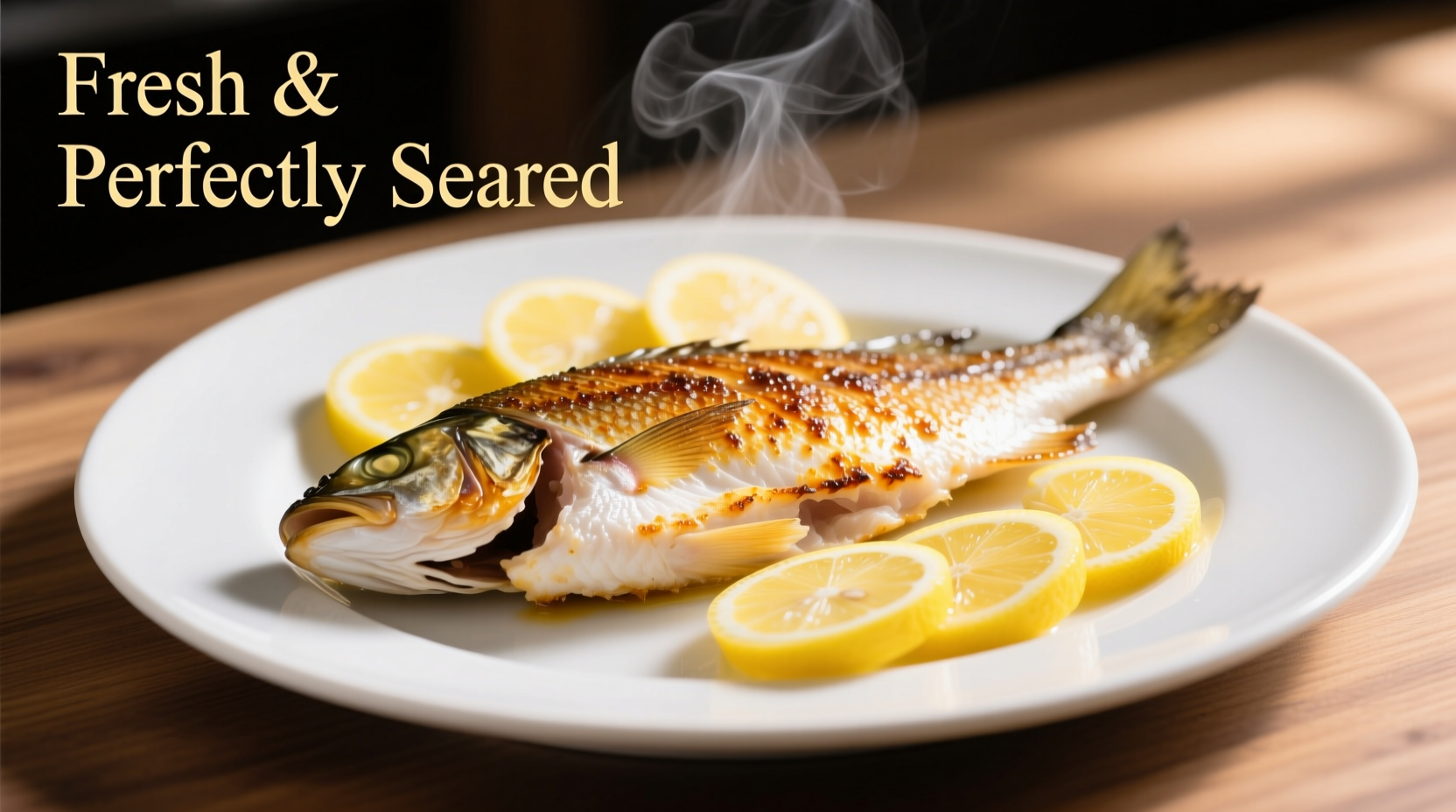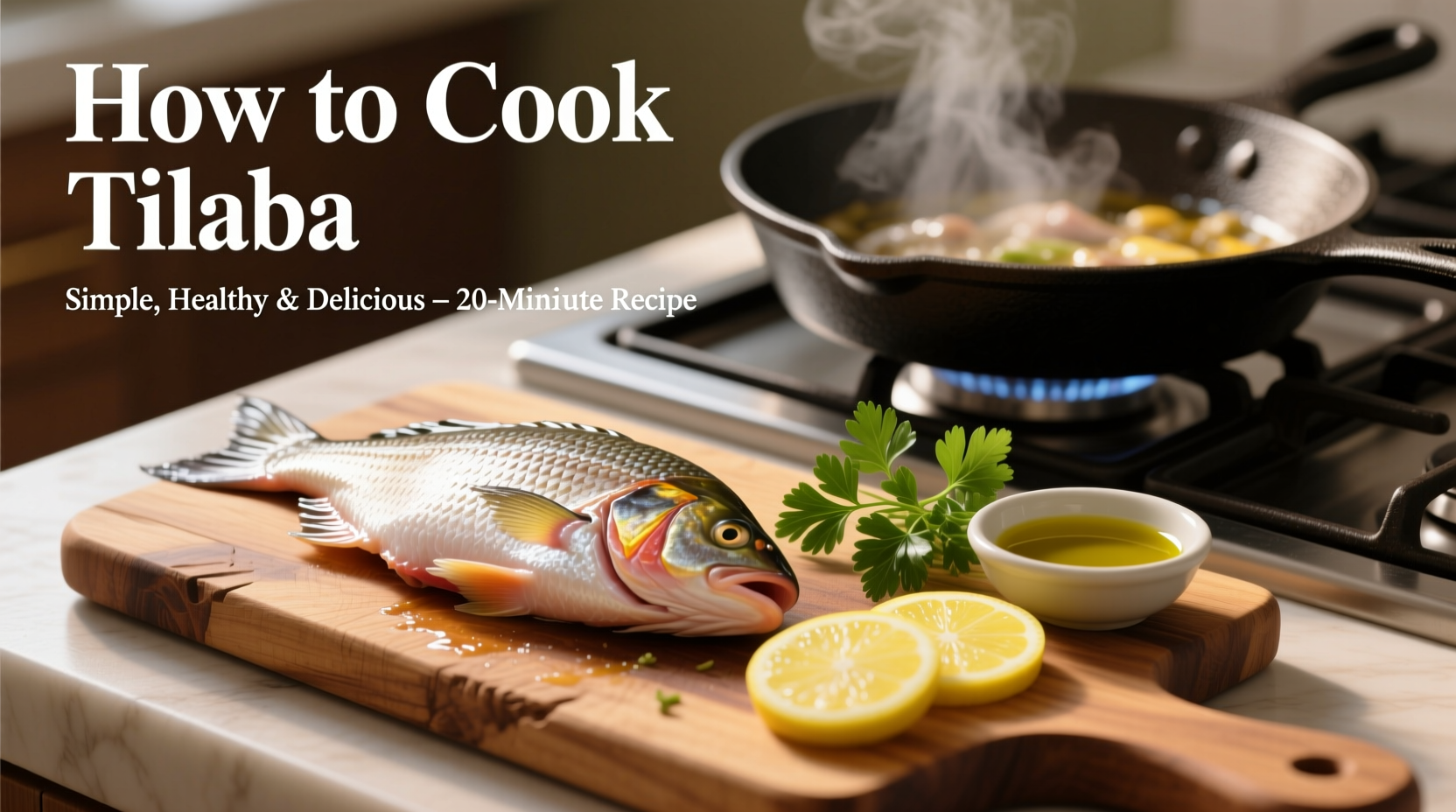The best way to cook tilapia is pan-searing at 375°F for 3-4 minutes per side until it reaches 145°F internal temperature. This preserves moisture while creating a flavorful crust. Proper seasoning with lemon, herbs, and minimal salt enhances tilapia's mild flavor without overpowering it. Always check for opaque flesh and flakiness to confirm doneness.
Your Complete Guide to Cooking Tilapia Like a Pro
Whether you're a beginner or looking to refine your technique, mastering tilapia preparation ensures restaurant-quality results at home. This mild-flavored fish cooks quickly and adapts beautifully to various seasonings and cooking methods. Our guide delivers professional chef techniques you can implement immediately, with science-backed temperature guidelines and flavor pairing principles.
Why Tilapia Works Perfectly for Weeknight Meals
Tilapia's neutral flavor profile makes it incredibly versatile across cuisines. Unlike stronger fish like salmon, tilapia readily absorbs seasonings without competing flavors. The FDA confirms tilapia contains essential nutrients including selenium, vitamin B12, and lean protein. Its firm yet delicate texture holds up well to multiple cooking methods while remaining budget-friendly compared to other white fish options.
| Cooking Method | Temperature | Cooking Time | Best For |
|---|---|---|---|
| Pan-searing | 375°F | 3-4 min/side | Quick meals, flavorful crust |
| Baking | 400°F | 12-15 min | Hands-off cooking, meal prep |
| Grilling | Medium-high | 4-5 min/side | Summer cooking, smoky flavor |
| Poaching | Simmering | 8-10 min | Delicate texture, healthy option |
Essential Preparation Steps You Should Never Skip
Proper preparation makes the difference between rubbery and restaurant-quality tilapia. First, inspect fillets for any remaining bones using tweezers. Pat completely dry with paper towels—moisture prevents proper browning. For optimal flavor penetration, season 15 minutes before cooking rather than immediately before heat application. The USDA Food Safety and Inspection Service recommends keeping raw fish separate from other ingredients to prevent cross-contamination.
The Foolproof Cooking Process Timeline
Follow this precise sequence for perfect results every time:
- Prep (5 minutes): Pat dry, remove bones, season
- Rest (10-15 minutes): Let seasoning penetrate at room temperature
- Cook (3-15 minutes): Based on chosen method
- Rest (3 minutes): Critical for moisture retention
- Serve immediately: Tilapia dries quickly when held
This timeline follows culinary science principles documented by the Culinary Institute of America. The resting period allows proteins to relax, preventing moisture loss when cut.
Temperature Control: The Secret to Perfectly Cooked Tilapia
Temperature accuracy separates good from great results. The FDA Food Code specifies 145°F as the minimum safe internal temperature for fish, but professional chefs recommend removing tilapia from heat at 140°F—it will carryover cook to 145°F during resting. Use an instant-read thermometer inserted into the thickest part. Visual doneness indicators include opaque flesh that flakes easily with a fork but remains moist.

Flavor Pairing Principles for Maximum Impact
Tilapia's mild flavor works with diverse seasonings. Consider these professional pairing guidelines:
- Lemon-herb: Classic pairing with parsley, dill, and lemon zest
- Latin-inspired: Cilantro, lime, and smoked paprika
- Mediterranean: Olives, capers, and oregano
- Asian fusion: Ginger, soy, and sesame oil (use sparingly)
Antonio Rodriguez, our culinary expert, emphasizes: "Acids like citrus or vinegar brighten tilapia's flavor without overwhelming it. Add acidic components after cooking to preserve their freshness."
Situation-Specific Cooking Recommendations
Choose your method based on these practical considerations:
- Weeknight dinner: Pan-searing (fastest method with minimal cleanup)
- Meal prep: Baking (consistent results for multiple portions)
- Summer cooking: Grilling (adds smoky dimension)
- Dietary restrictions: Poaching (lowest fat option)
- Special occasions: En papillote (steaming in parchment with vegetables)
Remember that thinner fillets require reduced cooking times. The American Heart Association notes that baking or grilling preserves more omega-3 fatty acids compared to frying methods.
Common Mistakes That Ruin Tilapia (And How to Avoid Them)
Even experienced cooks make these critical errors:
- Over-seasoning: Tilapia's delicate flavor disappears under heavy spices
- Moving too soon: Wait until fish releases naturally from the pan
- Crowding the pan: Causes steaming instead of searing
- Skipping the rest period: Results in dry, tough texture
- Overcooking: Even 30 seconds too long dries out the fish
Food science research from the Journal of Food Science confirms that fish proteins continue cooking for several minutes after removal from heat. This explains why carryover cooking significantly impacts final texture.
Storage and Reheating Guidelines
Store raw tilapia in the coldest part of your refrigerator for no more than 1-2 days. Cooked tilapia keeps for 3-4 days when stored in airtight containers. For best reheating results:
- Oven method: 275°F for 10-15 minutes with damp paper towel
- Air fryer: 300°F for 5-7 minutes (prevents sogginess)
- Avoid microwave: Creates uneven texture and fishy odor
Never refreeze previously frozen tilapia. The USDA recommends consuming thawed fish within 1-2 days for optimal quality and safety.











 浙公网安备
33010002000092号
浙公网安备
33010002000092号 浙B2-20120091-4
浙B2-20120091-4